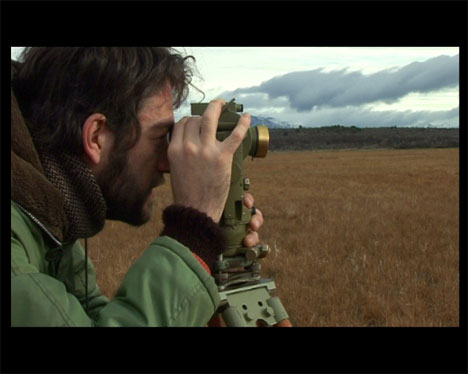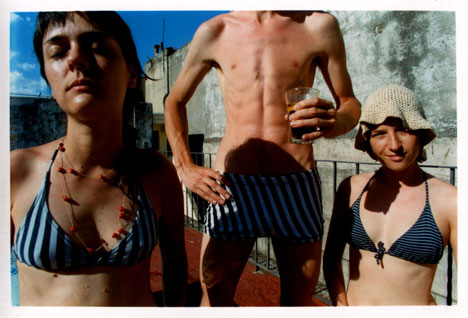IGNACIO MASLLORENS
PEOPLEText: Gisella Lifchitz
I keep asking, and the answers come, strong and clear. “To me, fiction is absolutely dead, Nacho assures. The future of movies is something more of a hybrid between fiction and documentary”.
You have a special interest for cartography, right? Why’s that?
I always loved maps, since I was a little kid. I loved the designs, the colours of maps, it isn’t a geographic interest, and is has to do with aesthetics. I like to invent maps.
That’s the moment I ask Nacho about his recent movie, “Pablo Dacal and the mystery of Rosario Lake”. This Indiana Jones-alike movie combines fiction, adventure, risk, travel, journalism, acting, and it is, above all things, a beautiful piece of art. It is filmed in the South of Argentina, near Nacho’s south, a place he knows so well, a place we get to know and understand in the movie. And the musician Pablo Dacal carries us in this amazing trip to find a stone that’s lost in the middle of Patagonia.
“Agustín Mendilaharzu (the screenwriter) did a great work here, Masllorens says. He’s a genius; he’s the real hero here. Another person that really helped me with this project is my father; he even appears in the film”.

Pablo Dacal and the mystery of Rosario Lake (2008)
This movie has about 30 second of black screen, pure darkness. This is a mystery, a joyful one. Nacho is playing hide and seek as if he was camping, his heart and ours pounding at the same time, waiting to be caught, no matter where we hide.
That’s part of his poetry, for sure. Like the cats and globes appearing in his movies, the shape of things he creates and discovers with the camera, the rhythms he provides to the video clips, the playful simplicity that defines him and his art.

Terraza (2004)
Tell me about your future projects.
I want to make movies with Pablo Dacal as the main character, I really like him on screen, and I think he’s very talented. I’m making more video clips also, and I just finished a TV cycle for a local channel with another musician and it’s narrated with pieces of fiction too.
Is there a limit when you make a movie? Do you think you could film anything?
You can do anything as long as you don’t betray your own rules; that’s what director Javier Daulte says. You’re committed to these rules. That’s the limit. Japanese filmmaker Takashi Miike says he’d never film a child crying. That’s what I’m talking about.
Nacho isn’t just another filmmaker. He could be our friend or the guy who takes us to the movies. But in this case, he’s the guy behind the camera. And I’m completely sure the world is a better place because of that.
Text: Gisella Lifchitz





